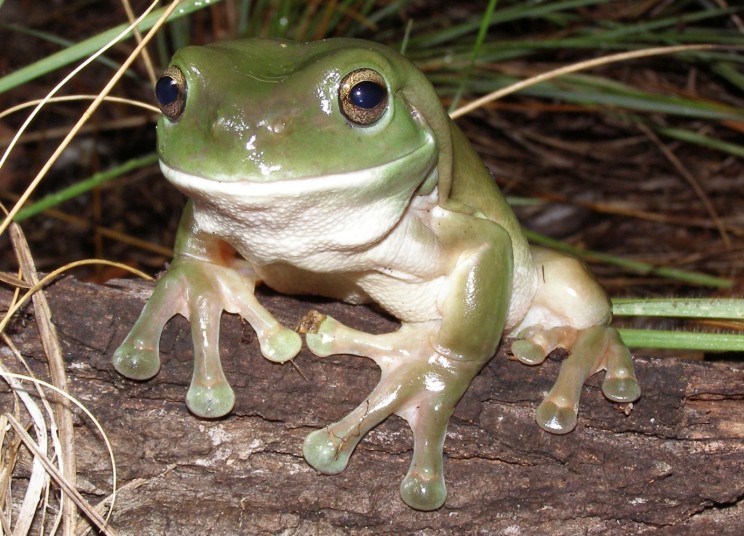By Rebecca Cramp
In recent decades, the extraordinarily rapid disappearance of frogs, toads, and salamanders has grabbed the attention of both the scientific community and concerned citizens the world over. Although the causes of some of these losses remain unresolved, the novel disease chytridiomycosis caused by the skin-based fungus Batrachochytrium dendrobatidis (Bd), has been identified as the causative agent in many of the declines and extinctions worldwide. Bd is now regarded as being responsible for the greatest disease-driven loss of vertebrate biodiversity in recorded history. Like other entirely cutaneous microbes, interactions with the skin of its host determine how and under what conditions the fungus can induce disease.
The skin plays an important role in immune defence. In the first instance, skin acts as a physical barrier against microbes and pathogens. It also produces anti-microbial skin secretions and supports a large microbial community made up of good (commensal), bad (pathogenic) and indifferent (neither good nor bad; having no discernable effect) microbes. Like most animals, the outer skin layer of amphibians is shed (sloughed) on a regular basis—as often as daily to every couple of weeks. However, unlike mammals, amphibians shed (and often eat) the entire outer skin layer in one piece. Therefore, anything adhering to or within that outer layer would be lost from the body every time the animal sloughs it skin. As such, regular sloughing could play a role in regulating the abundance and persistence of microbes (including Bd) at the body’s surface. To date, however, the potential for regular skin sloughing to serve as an immune defense strategy in amphibians has been largely overlooked.

A green tree frog. Photo by Ed Meyer.
To test the hypothesis that sloughing in plays a role in the management of cutaneous microbe abundance, we investigated changes in the number of cultivable cutaneous bacteria on the ventral and dorsal body surfaces of the Green tree frog (Litoria caerulea) with sloughing. Effects of temperature on sloughing periodicity were also investigated in order to determine how the efficacy of sloughing in regulating microbial infection might vary with climate and season. Our study showed that sloughing massively reduced the overall abundance of bacteria, in some cases by as much as 100%. In addition, temperature had a marked effect on sloughing periodicity, with animals in cooler temperatures having a much longer time between sloughs compared with animals at held higher temperatures.
Most importantly however, we found that the extended time between sloughs in animals in the cold treatments allowed skin microbe numbers to increase to levels in excess of those seen in animals in the warm treatment. These data suggest that for pathogens that like relatively cooler conditions (like Bd), the effect of temperature on host sloughing frequency may allow pathogen numbers to build up to such a degree that fatal disease occurs.
What does it all mean, though? Firstly, the epidemiology of skin based diseases like Bd could be in part attributed to the effects of temperature on host sloughing periodicity particularly when disease outbreaks occur in cool habitats and/or at cooler times of year. Secondly, differences between species in the frequency of sloughing could influence pathogen establishment and go some way to explaining why some amphibian species are more resistant to cutaneous pathogens than others. Thirdly, the ability of commensal (good) bacteria to protect against pathogens may be reduced in frog species which slough frequently as commensal bacteria would also be lost from the skin with sloughing, unless they are able to recolonise the skin rapidly.
Understanding the role the skin plays as the first bastion of defense against external pathogens is vitally important as the rate of emergence of both novel and pre-existing infectious diseases is predicted to skyrocket in the future as a result of anthropogenic climate change.
Dr Rebecca Cramp is a Research Officer at The University of Queensland in the laboratory of Professor Craig Franklin. Rebecca has diverse research interests and is currently working on several projects including a study of disease susceptibility in frogs, the control of ion regulation in acid-tolerant amphibian larvae and the effects of environmental stressors on immune function in amphibian larvae. She is a co-author of the paper ‘First line of defence: the role of sloughing in the regulation of cutaneous microbes in frogs‘, which appears in the journal Conservation Physiology.
Conservation Physiology is an online only, fully open access journal published on behalf of the Society for Experimental Biology. Biodiversity across the globe faces a growing number of threats associated with human activities. Conservation Physiology publishes research on all taxa (microbes, plants and animals) focused on understanding and predicting how organisms, populations, ecosystems and natural resources respond to environmental change and stressors. Physiology is considered in the broadest possible terms to include functional and mechanistic responses at all scales.
Subscribe to the OUPblog via email or RSS.
Subscribe to only earth and life sciences articles on the OUPblog via email or RSS.
Image credit: A green tree frog. Photo by Ed Meyer. Do not reproduce without permission.
The post Why do frogs slough their skin? appeared first on OUPblog.



